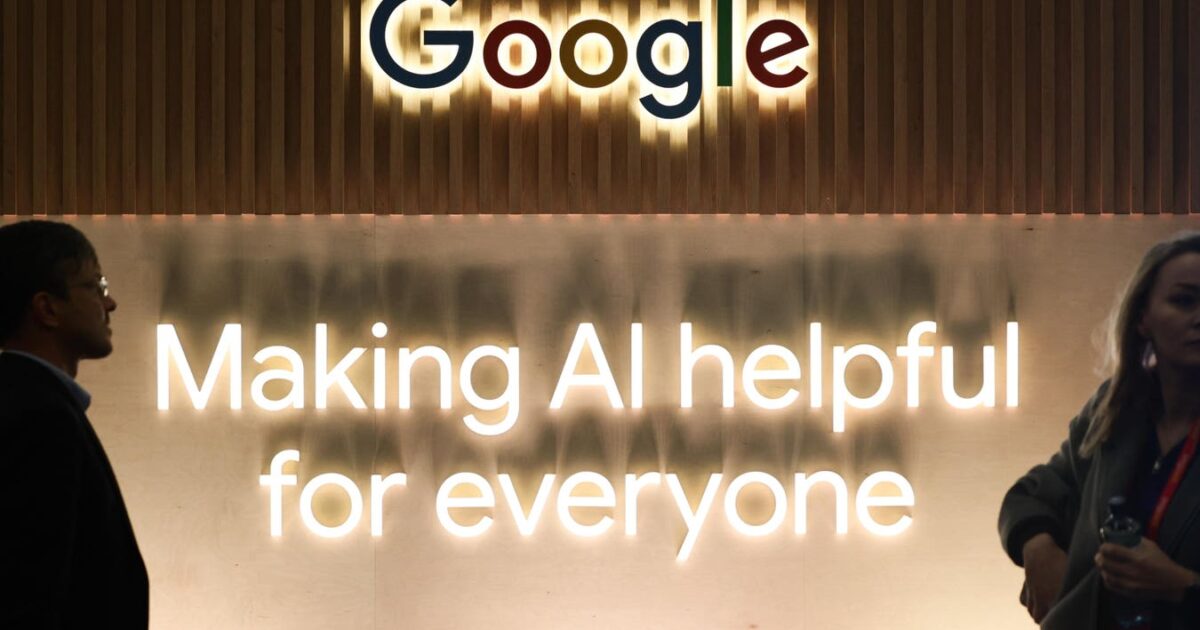Google AI Overviews—Everything You Need To Know

Google Search AI Overviews are here, but there are privacy, bias and accuracy concerns—and you can’t … More
When using Google Search, you might have noticed a new option called AI Overviews. This is Google’s new AI search offering that’s likely to change the internet, for better or worse.
As OpenAI’s ChatGPT and newer competitors such as DeepSeek launch into the market, just about everyone seems to be adding AI into their products. Meta’s WhatsApp has also come under fire for its blue AI circle, which is difficult to avoid.
Google officially pushed its AI Search at its Google I/O event on May 20, where it claimed that people using AI Overviews are finding it so useful, they’re even using search more often. In its biggest markets including the U.S. and India, the tool is driving over 10% increase in usage of Google for the types of queries that show AI Overviews, the tech giant claimed.
I’ll admit AI overviews are useful—and others seem to think so too. But when you really challenge them, they aren’t always as good as they seem. As Android Authority’s Andrew Grush writes, AI Overviews are great for basic questions, but for more complex queries, the cracks start to show.
There are also concerns with Google’s AI Overviews, such as privacy, as well as issues with bias or inaccurate results. Publishers are concerned that AI Overviews may reduce click-throughs, with U.K. newspapers already reporting less traffic.
Google positions AI Overviews as helpful, yet it “conceals significant implications that aren’t immediately apparent to most users,” says Angus Allan, senior product manager at CreateFuture. He thinks it represents “a fundamental transformation” of Google’s mission: “From helping us find information to synthesising information for us.”
Here’s what you need to know, including how to avoid AI Overviews when using Google search.
Privacy Concerns With Google’s AI Overviews
Unsurprisingly, there are privacy concerns with AI Overviews.
One issue is related to what people might type into search. Google’s business model is based on advertising, which experts say raises further concerns.
“Every time you encounter these overviews, your interaction becomes part of your Google profile,” says Allan.
In fact, unless you deliberately navigate to Settings and disable Web & App Activity, your queries, the generated answers, any thumbs-up or down ratings, and “a constellation of metadata, time-stamps, location data, and device information sit on Google’s servers for up to 18 months,” Allan warns.
Yet the more concerning privacy aspect is the potential trajectory, says Allan. “Because these overviews live inside your signed-in account, they can draw on your full Google graph, Maps check-ins, Gmail contents, and YouTube watch history, making future answers both hyper-personalised and deeply revealing if that data were to leak or be subpoenaed.”
If you type someone’s personal information into your query, that could, in theory, “go into the database and then be reproduced randomly any time the machine decides to,” says Dr Clare Walsh, director of the Institute of Analytics.
Google’s July 2023 privacy policy update explicitly permits using publicly available information for AI training, with lengthy retention periods.
“While some of the larger privacy concerns remain theoretical based on how Google could use your data, there remain significant fundamental issues with the concept of this feature—ranging from misinformation to jeopardising the open web,” says Allan.
Other Reasons To Avoid Google’s AI Overviews
Aside from privacy, users might find the summaries “inaccurate, biased, or oversimplified,” says says Karine Laudort, founder of digital marketing agency Kay Flawless.
For example, it isn’t difficult to find examples of these AI overviews suggesting that users “glue pizza and eat rocks”, Allan points out.
Then there is “the more insidious misinformation,” Allan says. For example, in one instance, AI Overviews suggested users make their password a combination of their name and birthday —a huge no-no in cybersecurity—or that appendicitis can be treated simply with mint tea.”
Another, more fundamental issue with AI overviews is how it “upends the content economy,” says Allan. “AI Overviews keep users away from publishers’ websites, and the publisher isn’t compensated by Google for the value that has been extracted. This fundamentally threatens the advertising-based business model that supports most online content.”
Google’s Take On AI Overviews
Google says AI Overviews are simply a feature in Search, just like a knowledge panel or a featured snippet. When the tech giant introduces new features, it says it does extensive testing to confirm that people find them helpful.
It also performs other tests such as adversarial red-teaming to ensure features such as this one are working correctly.
Google acknowledges that for some queries, people really want to get to just web links. It has therefore introduced a “web” filter that lets people get a results page with just links, and no features at all.
AI Overviews offer a preview of a topic or query based on a variety of sources, including web sources. As such, they are subject to Search’s preview controls, according to Google.
The tech firm points out that web publishers can use the NOSNIPPET meta tag and the DATA-NOSNIPPET attribute to limit visibility of specific pages or parts of pages in search results—including preventing content from being used as an input into AI Overviews. They can also use MAXSNIPPET to limit how much content can be used as an input into AI Overviews.
Google says AI Overviews were designed to show up on queries where they can add additional benefit beyond what people might already get on Search today, and where the firm has high confidence in the quality of the responses.
This means they will show up in Search results when Google’s systems determine that generative AI can be especially helpful—for example, when you want to quickly understand information from a range of sources.
Google says it has built strong quality protections into AI Overviews, including highlighting supporting information so people can verify what’s presented. It also has policies in place designed to present harmful, hateful, and explicit content from appearing in AI Overviews.
This implementation of generative AI is rooted in Search’s core quality and safety systems, with built-in guardrails to prevent low-quality or harmful information from surfacing, Google says.
How To Turn Off AI Overviews
Google’s AI Overviews is a new technology and it’s not surprisingly that you might be cautious about using it. With these issues in mind, it’s easy to see why you might want to turn off AI Overviews. However, this isn’t technically possible—at least at the moment.
Instead, you will need to use workarounds to make your experience more private.
The most straightforward method is to use a Google Chrome extension called Hide Google AI Overviews, Allan advises. This is a “set it and forget it” approach if you use Chrome or Edge and the developer has disclosed that it will not collect or use your data, says Allan.
For other browsers, or those who don’t want to use an extension, you can append “&udm=14” to the end of any Google search URL which instantly forces the plain-vanilla “Web” tab with traditional blue links and no AI.
You can create a custom search engine in your browser settings with the URL: {google:baseURL}search?q=%s&udm=14 and set it as your default search provider, says Allan.
Then the nuclear option is switching search engines altogether, Allan says. “DuckDuckGo, Kagi, and Brave Search still serve traditional link-based results and log far less personal data while delivering comparable search quality,” he advises.
Google search is a widely used tool and it isn’t going to go away any time soon. Yet the concerns with AI Overviews could be an opportunity to look at more privacy-conscious browser options—at least for some of your searching needs.
